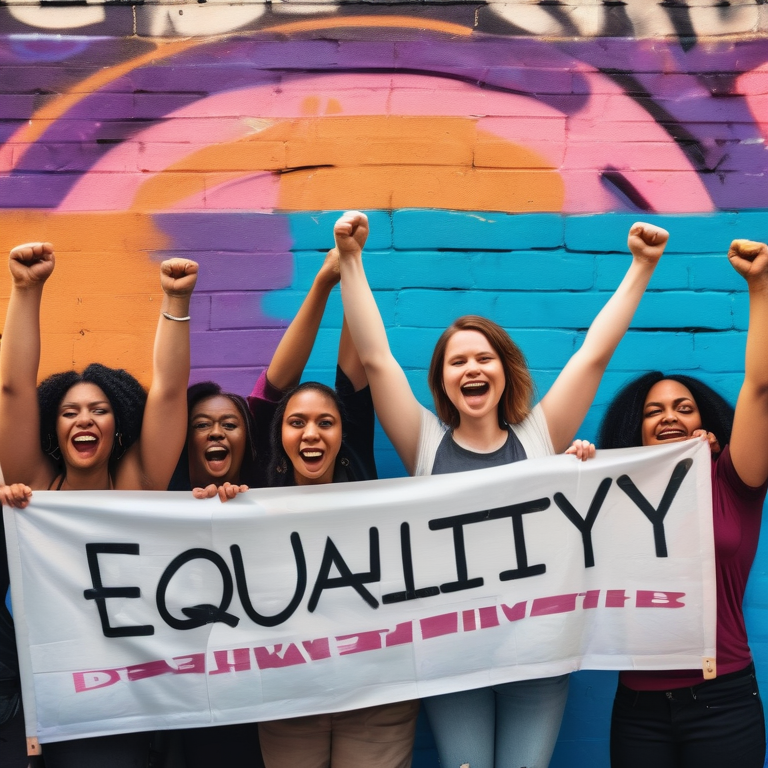Exploring Case Studies in Female Sexuality

Key Highlights
- Female sexuality is complex and varied, and cannot be summarized in a single experience.
- Research shows that differences in sexual desire between men and women may be more nuanced or non-existent.
- Hormonal factors, neurological underpinnings, and sociocultural influences all play a role in female sexuality.
- Case studies provide valuable insights into the diverse experiences of female sexuality across different cultures.
- Overcoming stigmas, biases, and research challenges is crucial for a better understanding of female sexuality.
- The future of female sexuality studies lies in further research and addressing sexual health concerns.
Introduction
Female sexuality has long been a topic of fascination and inquiry. However, understanding and defining female desire has proven to be a complex and challenging endeavor. From Sigmund Freud to Mel Gibson, many have attempted to unravel the enigma of what women want. Despite decades of research, there is still no unified definition or comprehensive understanding of female sexuality.
In recent years, scientists and researchers have begun to recognize that female desire cannot be generalized or reduced to one single experience. It varies between women and even within individuals, spanning a diverse spectrum of manifestations. The study of female sexuality has evolved to encompass a more nuanced and inclusive approach that takes into account the individuality and complexity of women’s desires.
This blog will delve into the fascinating world of female sexuality through the lens of case studies. By exploring case studies, we can gain insights into the different facets of female sexuality, including sexual orientation, sexual desire, and sexual pleasure. We will also examine the historical perspectives, psychological aspects, biological influences, and sociocultural factors that shape female sexuality. Along the way, we will highlight the importance of studying female sexuality, discuss key figures in the field, and address common questions and misconceptions. Through this exploration, we hope to shed light on the diverse and intricate nature of female sexuality.
Understanding Female Sexuality Through Case Studies
The study of female sexuality has evolved to embrace a case study approach, offering a comprehensive exploration of the intricacies involved. Through case studies, researchers gain valuable insights into the real-life experiences of individuals, enabling them to delve into diverse facets of female sexuality. By analyzing cases across various sexual orientations and preferences, researchers can pinpoint commonalities and differences in sexual encounters. This method recognizes that female sexuality is not uniform and underscores the significance of recognizing individual distinctions and distinct viewpoints.
Furthermore, case studies in female sexuality research allow for a nuanced understanding of the socio-cultural influences, psychological factors, and personal histories that shape an individual’s sexual identity. By delving into specific cases, researchers can uncover how societal norms, personal experiences, and relationships impact one’s perception of sexuality. This approach emphasizes the need to move beyond generalized assumptions about female sexuality and instead focus on the unique narratives and complexities that define each individual’s intimate experiences.
Moreover, employing a case study approach in the study of female sexuality enables researchers to explore topics such as sexual agency, desire, pleasure, and empowerment from a holistic perspective. By examining individual cases in depth, researchers can capture the multifaceted nature of female sexuality and challenge traditional notions or stereotypes surrounding women’s sexual behaviors.
In conclusion, the adoption of case studies in the study of female sexuality offers a nuanced and multi-dimensional understanding of this complex subject matter. By highlighting individual stories and diverse experiences, researchers can contribute to a more inclusive and comprehensive discourse on female sexuality that takes into account the diverse realities and perspectives of women across different contexts.
The Importance of Studying Female Sexuality
Exploring and understanding female sexuality is paramount for promoting sexual health and enriching our comprehension of women’s requirements and preferences. Research into the determinants affecting female sexual well-being, including factors like sexual gratification, longing, and contentment, enables experts to devise solutions and therapies that target the unique obstacles encountered by women. Furthermore, delving into women’s sexuality confronts societal conventions and biases, encouraging women to accept their inclinations and choices without stigma or criticism. By championing extensive studies on female sexuality, we can advocate for sexual wellness and foster a society that is more accepting and empathetic towards diverse sexual identities. This research also plays a crucial role in debunking myths around female sexuality and ensuring that healthcare services are tailored to meet the specific needs of women.
Methodologies in Researching Female Sexuality
In researching female sexuality, various methodologies are employed to gather data and gain insights into women’s experiences. The case study approach, which focuses on in-depth analysis of individual cases, allows researchers to explore the complexities of female sexual activity, desires, and preferences. This approach provides a rich and detailed understanding of the factors that shape women’s sexual experiences. Additionally, surveys, interviews, and observational studies are used to gather quantitative and qualitative data on sexual behavior, satisfaction, and desire. By combining different methodologies, researchers can paint a comprehensive picture of female sexuality and contribute to the knowledge base in this field.
Historical Perspectives on Female Sexuality
Throughout history, female sexuality has been a subject shrouded in myths, misconceptions, and societal taboos. Early beliefs varied widely, depicting women as either insatiable nymphomaniacs or devoid of any sexual desire. As time progressed, the understanding of female sexuality underwent a transformation, debunking these myths and emphasizing the significance of sexual pleasure and desire in women’s lives. Historical perspectives on female sexuality have delved into crucial topics such as women’s capacity to experience orgasm, the importance of masturbation, and the role of pleasure in shaping women’s sexual encounters.
These historical insights pave the way for comprehending the intricacies of female sexuality in contemporary society. They underline the evolution of societal perceptions towards female pleasure and desire and highlight the ongoing efforts to empower women in embracing their sexual identities. By acknowledging the historical contexts surrounding female sexuality, we gain valuable insights into how far we have come and the strides yet to be made in fostering a more inclusive and informed discourse on this vital aspect of human experience.
Evolution of Female Sexuality Concepts
The concept of female sexuality has evolved significantly over time. Early theories viewed female sexuality as solely for procreation, with little emphasis on pleasure or desire. As scientific understanding progressed, researchers began to recognize the importance of sexual pleasure and desire in women’s lives. The exploration of female sexual pleasure and the recognition of women’s capacity for multiple orgasmic experiences challenged societal norms and stereotypes. The evolving understanding of female sexuality has played a crucial role in empowering women to embrace their desires and seek sexual fulfillment. By examining the historical evolution of female sexuality concepts, we can gain valuable insights into the societal and cultural factors that have shaped our understanding of women’s sexual experiences.
Key Historical Figures in the Study of Female Sexuality
Throughout history, there have been key figures who have made significant contributions to the study of female sexuality. These pioneers challenged societal norms, broke down barriers, and advocated for a better understanding of women’s sexual health. They paved the way for modern research and provided valuable insights into the complexities of female sexuality. Some notable figures include pioneering sexologists like Havelock Ellis and Alfred Kinsey, who conducted groundbreaking research on human sexuality. Other influential figures include feminist scholars and activists like Shere Hite and Betty Dodson, who focused on women’s sexual pleasure and advocated for sexual liberation. By recognizing the contributions of these historical figures, we can appreciate the progress that has been made in understanding and celebrating women’s sexuality.
Psychological Aspects of Female Sexuality
Psychological factors are fundamental in shaping female sexuality, impacting aspects like sexual desire, satisfaction, and overall sexual well-being. These factors play a crucial role in understanding and addressing issues such as low desire and sexual dysfunction among women. Psychological theories offer valuable insights into the diverse elements that can influence a woman’s sexual encounters, ranging from past experiences to body image, self-esteem, and emotional well-being.
By delving into these psychological facets, researchers and healthcare providers can design interventions and therapies aimed at fostering healthy sexual functioning and boosting sexual satisfaction for women. Understanding the intricate interplay between psychological factors and female sexuality is essential for providing comprehensive care and support to individuals dealing with sexual health challenges. It enables tailored approaches that address the unique needs and concerns of women, ultimately contributing to improved overall well-being and quality of life.
The Role of Emotions in Female Sexuality
Emotions play a vital role in female sexuality, influencing sexual desire, pleasure, and overall sexual experiences. Positive emotions such as love, intimacy, and connection can enhance sexual pleasure and satisfaction. On the other hand, negative emotions such as stress, anxiety, or relationship issues can impact a woman’s sexual desires and responses. Emotions are also linked to sexual orientation, as individuals’ emotional connections to others may influence their desires and attractions. By understanding the role of emotions in female sexuality, we can better support women’s sexual well-being and create a more inclusive and understanding society that embraces the diversity of sexual experiences.
Psychological Theories Explaining Female Desire
Psychological theories provide valuable insights into the complexities of female desire, including low desire and sexual difficulties. These theories explore various factors that can influence a woman’s sexual desire, including interpersonal dynamics, past experiences, self-image, and cultural influences. For example, the dual control model of sexual response suggests that sexual desire is influenced by both sexual excitation and inhibition systems. Other theories, such as the cognitive-behavioral model, focus on the role of thoughts, beliefs, and attitudes in shaping sexual desire. By understanding these psychological theories, we can develop interventions and therapies that address low desire and promote healthy sexual functioning for women.
Biological Influences on Female Sexuality
Biological factors are key determinants of female sexuality, affecting various aspects such as sexual desire, arousal, and pleasure. Hormonal fluctuations, particularly in estrogen and testosterone levels, have a significant impact on a woman’s sexual drive and experiences. These hormonal changes can influence mood, energy levels, and overall well-being, all of which play a role in sexual desire.
Additionally, the neurological aspects of female sexuality are equally important. Brain structures and neurotransmitters are essential in the process of sexual response and pleasure. For example, neurotransmitters like dopamine and serotonin are involved in regulating mood and arousal levels during sexual activity.
Understanding these biological influences on female sexuality is crucial as it provides insights into the intricate nature of women’s sexual experiences. By recognizing how hormones and brain functions affect sexuality, healthcare professionals can develop targeted interventions and treatments for women experiencing sexual difficulties or disorders. This holistic approach takes into account both the physical and psychological aspects of female sexuality to provide comprehensive care.
Hormonal Factors Affecting Desire and Pleasure
Hormonal factors, such as fluctuations in estrogen and testosterone levels, can impact a woman’s sexual desire, pleasure, and overall sexual experiences. Estrogen plays a vital role in maintaining vaginal lubrication, while testosterone contributes to sexual desire and arousal. Fluctuations in hormone levels throughout the menstrual cycle can also influence a woman’s sexual desire and responsiveness. Additionally, hormonal changes during pregnancy, menopause, and certain medical conditions can impact sexual functioning. By understanding the role of hormones in female sexuality, healthcare providers and researchers can develop targeted interventions and treatments that address hormonal imbalances and enhance sexual pleasure and satisfaction.
Neurological Underpinnings of Sexual Response
Neurological factors play a crucial role in female sexual response and pleasure. Brain structures and neurotransmitters involved in reward, pleasure, and arousal contribute to the experience of sexual pleasure and orgasm. For example, the release of dopamine and oxytocin during sexual activity enhances feelings of pleasure and bonding. The activation of specific brain regions, such as the prefrontal cortex and amygdala, also plays a role in shaping sexual desire and responses. Understanding the neurological underpinnings of female sexual response provides valuable insights into the mechanisms behind sexual pleasure and can inform interventions and therapies for sexual difficulties and disorders.
Sociocultural Factors and Female Sexuality
Sociocultural factors play a crucial role in shaping female sexuality, influencing beliefs, attitudes, and expectations regarding sex. The media, encompassing both pornography and mainstream entertainment, can have a significant impact on how women perceive themselves sexually and their body image. Additionally, societal norms and cultural values contribute to shaping women’s sexual desires, behaviors, and overall experiences.
Recognizing the influence of these sociocultural factors is essential for fostering healthy sexual development, dispelling detrimental stereotypes, and establishing a more inclusive and supportive space for women’s sexual encounters. By understanding the multifaceted ways in which society shapes female sexuality, we can work towards promoting positive and empowering narratives surrounding women’s sexual identities. It is imperative to address these factors to create a more open and accepting environment that celebrates diverse expressions of female sexuality while challenging harmful misconceptions and restrictions.
Impact of Media on Female Sexual Self-Perception
Media, including pornography and mainstream entertainment, can have a significant impact on female sexual self-perception and body image. The portrayal of unrealistic and idealized sexual scenarios in pornography can create unrealistic expectations and contribute to body dissatisfaction. Mainstream media often perpetuates narrow standards of beauty and sexual desirability, leading women to compare themselves to unrealistic ideals. Additionally, the marketing of pharmaceuticals like Viagra for male erectile dysfunction can create psychological pressure on women to conform to a certain sexual standard. Recognizing the influence of media on female sexual self-perception is crucial for promoting body positivity, healthy sexual development, and a more realistic understanding of women’s desires and pleasure.
The Influence of Societal Norms on Female Desires
Societal norms and cultural values play a significant role in shaping women’s desires, behaviors, and sexual experiences. Cultural expectations surrounding gender roles, sexuality, and sexual activity can influence women’s attitudes towards sex and their own desires. In some societies, women may face restrictions and stigmas related to sexual expression and pleasure. Societal norms can also impact women’s decisions regarding sexual activity, contraception, and reproductive health. By understanding the influence of societal norms on female desires, healthcare providers and policymakers can work towards creating a more inclusive and supportive environment that respects women’s autonomy and sexual well-being.
Case Studies Highlighting Diverse Sexual Experiences
Case studies provide valuable insights into the diverse sexual experiences of women, including variations in sexual orientation, desire, and pleasure. By examining individual cases, researchers can explore the complexities of women’s sexual experiences and understand the factors that shape their desires and preferences. Case studies also allow for a more nuanced understanding of the intersecting identities and cultural contexts that influence women’s sexual lives. By highlighting diverse case studies, we can celebrate the diversity of female sexuality and promote a better understanding of women’s desires and needs.
Exploration of Female Sexuality Across Different Cultures
Exploring female sexuality across different cultures provides insights into how cultural factors shape women’s desires, sexual behaviors, and experiences. The expression and acceptance of female sexuality vary significantly across cultures, influenced by factors such as religion, societal norms, and roles. Some examples of cultural influences on female sexuality include:
- In some cultures, sexual desire and pleasure are taboo topics, leading to limited sexual expression and communication.
- Cultural practices, such as female genital mutilation, can impact sexual pleasure and functioning.
- Gender roles and expectations may dictate women’s sexual behaviors and restrict their sexual autonomy.
By examining female sexuality through a cultural lens, we can gain a deeper understanding of the diverse ways in which women navigate their desires and experiences.
Personal Narratives of Discovering Sexual Identity
Personal narratives of individuals discovering their sexual identity offer valuable insights into the complexities of sexual orientation and desire. These narratives highlight the diverse experiences of individuals as they navigate their sexual identities and come to terms with their desires and attractions. Personal stories can shed light on the challenges, triumphs, and self-discovery involved in understanding and embracing one’s sexual orientation. By amplifying these narratives, we can foster empathy, understanding, and acceptance for individuals of all sexual orientations and identities.
Challenges in the Study of Female Sexuality
The study of female sexuality faces various challenges, including stigmas, biases, and research limitations. Societal taboos and cultural beliefs can create barriers to open and honest discussions about female sexuality. Biases and assumptions, both conscious and unconscious, can influence the design, interpretation, and publication of research on female sexuality. Additionally, research challenges, such as limited funding and access to diverse populations, can impact the scope and generalizability of findings. Recognizing these challenges is crucial for promoting unbiased research and creating a more inclusive and comprehensive understanding of female sexuality.
Overcoming Stigmas and Biases in Research
Overcoming stigmas and biases in research is essential for advancing our understanding of female sexuality and promoting sexual health for women. Researchers must actively challenge societal taboos and stereotypes, creating safe and inclusive spaces for women to discuss their sexual experiences. Additionally, addressing biases and assumptions within the research process, such as gender biases and heteronormativity, is crucial for producing unbiased and comprehensive findings. By working towards unbiased research and promoting open and respectful discussions about women’s sexuality, we can create a more inclusive and supportive environment that prioritizes sexual health and well-being.
Future Directions in Female Sexuality Studies
Future research in female sexuality should focus on addressing gaps in knowledge, promoting sexual health, and advancing our understanding of women’s desires and experiences. Some key areas for future research include:
- Exploring the impact of technology and digital media on female sexuality.
- Investigating the intersectionality of gender, race, and sexuality in shaping sexual experiences.
- Examining the link between sexual pleasure, mental health, and overall well-being.
- Developing comprehensive sexual education programs that address diverse sexual orientations and desires.
These research directions will contribute to a more comprehensive and inclusive understanding of female sexuality, promoting sexual health and well-being for women. A text table presenting the future research directions and their significance can be created as follows:
|
Future Research Directions |
Significance |
|
Impact of technology on female sexuality |
Understanding how digital media influences women’s sexual experiences and well-being. |
|
Intersectionality of gender, race, and sexuality |
Examining how different identities intersect to shape women’s sexual desires and experiences. |
|
Link between sexual pleasure and mental health |
Investigating how sexual satisfaction contributes to overall mental well-being in women. |
|
Comprehensive sexual education programs |
Developing inclusive and comprehensive programs that address diverse sexual orientations and desires. |
Conclusion
Understanding female sexuality through case studies is crucial for shedding light on diverse experiences and breaking societal taboos. By delving into historical, psychological, biological, and sociocultural perspectives, we gain insight into the complexities of female desire and pleasure. These studies challenge norms, encourage open conversations, and pave the way for a more inclusive and respectful understanding of female sexuality. Embracing personal narratives and diverse cultural experiences fosters empathy and acceptance. Despite challenges and biases, ongoing research holds promise for a future where female sexuality is celebrated in all its forms. Share your thoughts below to contribute to this important dialogue.
Frequently Asked Questions
What Defines Female Sexual Pleasure?
Female sexual pleasure is defined by individual preferences and desires. It can involve various activities, such as masturbation, sexual fantasies, exploring erogenous zones, and engaging in sexual acts with a partner. Sexual pleasure does not necessarily require penetration or orgasm and can be experienced in diverse ways.
How Do Sociocultural Factors Influence Female Sexuality?
Sociocultural factors, such as societal norms and media influence, can shape female sexuality. These factors impact women’s attitudes towards sex, their desires, and the expectations placed upon them. Media portrayals and societal expectations can influence body image, sexual self-perception, and sexual behaviors.
Can Female Sexuality Change Over Time?
Female sexuality can evolve and change over time. Factors such as hormonal changes, life experiences, and personal growth can impact a woman’s sexual desires and preferences. Additionally, sexual orientation can also evolve and shift for some individuals throughout their lives.





